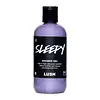What's inside
What's inside
 Key Ingredients
Key Ingredients

No key ingredients
 Benefits
Benefits

 Concerns
Concerns

 Ingredients Side-by-side
Ingredients Side-by-side

Water
Skin ConditioningSodium Laurylglucosides Hydroxypropylsulfonate
CleansingCoco-Glucoside
CleansingDisodium Cocoamphodiacetate
CleansingGlycerin
HumectantSodium Methyl Cocoyl Taurate
CleansingSodium Chloride
MaskingNiacinamide
SmoothingTocopherol
AntioxidantSaccharum Officinarum Extract
MoisturisingPyrus Malus Fruit Extract
Skin ConditioningCitrus Aurantium Dulcis Fruit Extract
MaskingCitrus Limon Fruit Extract
MaskingCamellia Sinensis Leaf Extract
AntimicrobialSclerocarya Birrea Seed Oil
HumectantCaryodendron Orinocense Seed Oil
EmollientLimnanthes Alba Seed Oil
Skin ConditioningCaprylyl Glycol
EmollientPhenoxyethanol
PreservativeCitric Acid
BufferingChlorphenesin
AntimicrobialSodium Phytate
Eucalyptus Globulus Leaf Oil
PerfumingLavandula Angustifolia Oil
MaskingAbies Sibirica Oil
MaskingZingiber Officinale Root Oil
MaskingCitrus Aurantium Dulcis Peel Oil
MaskingPogostemon Cablin Leaf Oil
MaskingWater, Sodium Laurylglucosides Hydroxypropylsulfonate, Coco-Glucoside, Disodium Cocoamphodiacetate, Glycerin, Sodium Methyl Cocoyl Taurate, Sodium Chloride, Niacinamide, Tocopherol, Saccharum Officinarum Extract, Pyrus Malus Fruit Extract, Citrus Aurantium Dulcis Fruit Extract, Citrus Limon Fruit Extract, Camellia Sinensis Leaf Extract, Sclerocarya Birrea Seed Oil, Caryodendron Orinocense Seed Oil, Limnanthes Alba Seed Oil, Caprylyl Glycol, Phenoxyethanol, Citric Acid, Chlorphenesin, Sodium Phytate, Eucalyptus Globulus Leaf Oil, Lavandula Angustifolia Oil, Abies Sibirica Oil, Zingiber Officinale Root Oil, Citrus Aurantium Dulcis Peel Oil, Pogostemon Cablin Leaf Oil
Sodium Laureth Sulfate
CleansingGlycerin
HumectantSodium Cocoamphoacetate
CleansingGoat Milk
Skin ConditioningOdontioda Lavender Lace Flower Extract
HumectantLauryl Betaine
CleansingParfum
MaskingLavandula Angustifolia Oil
MaskingBenzoin Ethyl Ether
Dipteryx Odorata Seed Extract
MaskingCananga Odorata Flower Oil
MaskingChondrus Crispus Extract
Skin ConditioningTitanium Dioxide
Cosmetic ColorantBenzyl Benzoate
AntimicrobialCoumarin
PerfumingLimonene
PerfumingLinalool
PerfumingCI 77007
Cosmetic ColorantSodium Laureth Sulfate, Glycerin, Sodium Cocoamphoacetate, Goat Milk, Odontioda Lavender Lace Flower Extract, Lauryl Betaine, Parfum, Lavandula Angustifolia Oil, Benzoin Ethyl Ether, Dipteryx Odorata Seed Extract, Cananga Odorata Flower Oil, Chondrus Crispus Extract, Titanium Dioxide, Benzyl Benzoate, Coumarin, Limonene, Linalool, CI 77007
 Reviews
Reviews

Alternatives
Ingredients Explained
These ingredients are found in both products.
Ingredients higher up in an ingredient list are typically present in a larger amount.
Glycerin is already naturally found in your skin. It helps moisturize and protect your skin.
A study from 2016 found glycerin to be more effective as a humectant than AHAs and hyaluronic acid.
As a humectant, it helps the skin stay hydrated by pulling moisture to your skin. The low molecular weight of glycerin allows it to pull moisture into the deeper layers of your skin.
Hydrated skin improves your skin barrier; Your skin barrier helps protect against irritants and bacteria.
Glycerin has also been found to have antimicrobial and antiviral properties. Due to these properties, glycerin is often used in wound and burn treatments.
In cosmetics, glycerin is usually derived from plants such as soybean or palm. However, it can also be sourced from animals, such as tallow or animal fat.
This ingredient is organic, colorless, odorless, and non-toxic.
Glycerin is the name for this ingredient in American English. British English uses Glycerol/Glycerine.
Learn more about GlycerinLavandula Angustifolia Oil is more commonly known as lavender essential oil. It is considered a fragrancing ingredient.
Lavender imparts a famous scent. While the smell is lovely, this ingredient and may sensitize skin in topical products. This is because about 85% of the oil is made up of linalool and linalyl acetate.
When exposed to air, these two compounds become strong allergens. This ingredient exhibits cytotoxicity at low concentrations; amounts of 0.25% have been shown to damage skin cells.
A study from Japan found this ingredient caused lavender sensitivity after widespread exposure.
Lavender essential oil has some antimicrobial, antibacterial, and anti-inflammatory properties. However, the cons of this ingredient may outweight the pros.
More research is needed to confirm lavender essential oil's effects when used in aromatherapy.
Lavandula Angustifolia is known as the English Lavender and famous for creating purple fields in Provence, France.
Learn more about Lavandula Angustifolia Oil